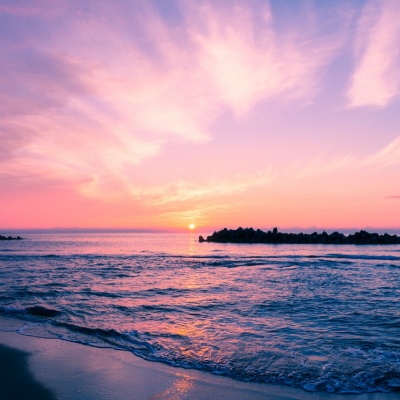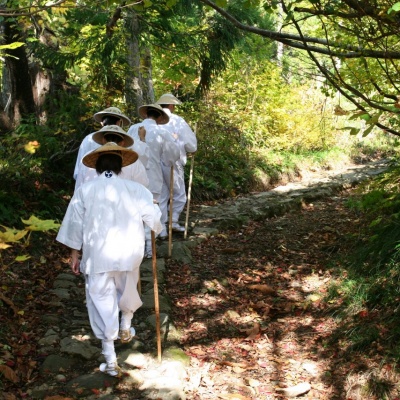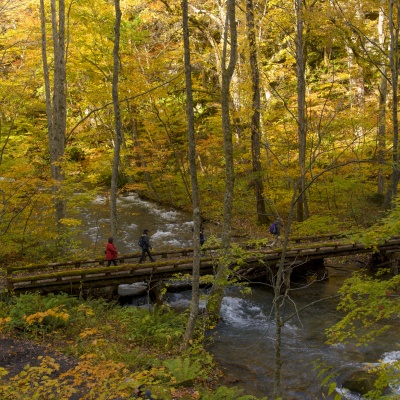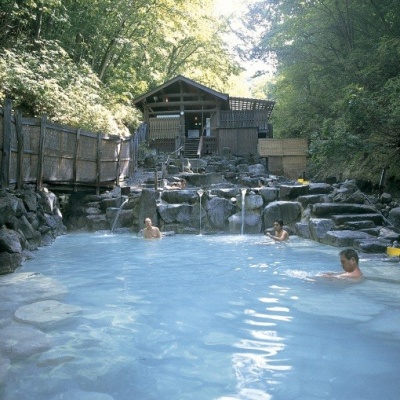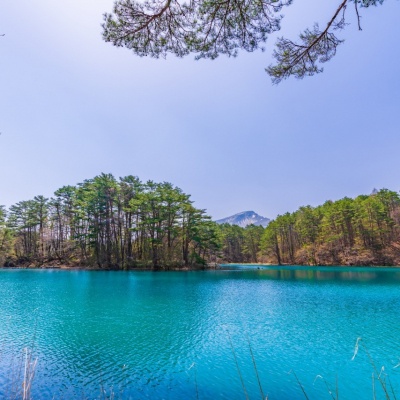Tohoku Traditional Craftsmanship and History
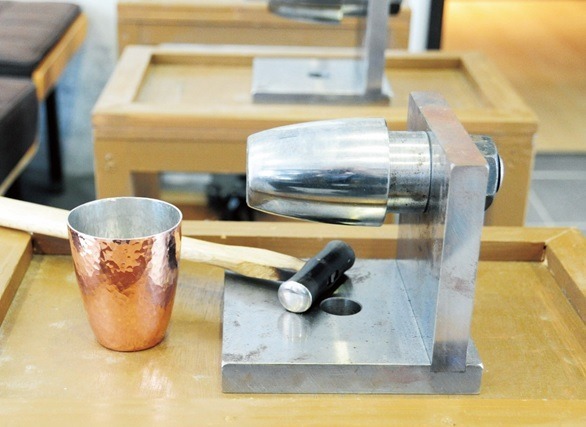
- Suggested Time : 3 days / 2 nights
- Transport Options : Drive
This route provides opportunities to experience the history and traditional craftsmanship of the Tohoku region and
Niigata in particular. In addition to hands-on workshops, you can enjoy the scenic beauty of Matsushima in Miyagi
Prefecture, which is counted among the three most iconic views of Japan.
(Niigata - Yahiko - Tsubame/Sanjo - Murakami - Aizuwakamatsu - Urabandai - Sendai - Matsushima/Sendai)
START
Day1
Niigata Station, Niigata Airport
Yahiko Shrine
The most famous sacred site in Niigata
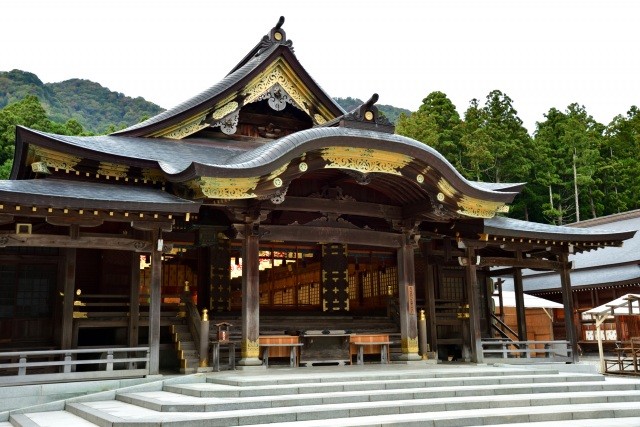
With a history stretching back 2,400 years, the Yahiko Shrine has been worshipped since ancient times. During the New Year celebrations a quarter of a million visitors come here to pray for good fortune and health for the coming year.
A 10-minute walk from JR Yahiko station takes you to the grove of Yahiko Shrine. As the shrine is popular for its sacred energy and exhilarating scenery, an early morning visit is recommended to fully appreciate its spiritual energy.
There is a unique stone known as a fortune-teller on site. Lift the stone while making a wish and if you feel the stone is light, your wish will come true. If the stone feels heavy however, your wish may not come true. Try it out on your visit for a unique experience!
A further 10-minute walk from the main shrine takes you to the base station of the Yahikoyama Ropeway. Take the ropeway up to the top station to visit Okusha – part of the shrine complex – from which a spectacular view of the surrounding countryside can be enjoyed.
A 10-minute walk from JR Yahiko station takes you to the grove of Yahiko Shrine. As the shrine is popular for its sacred energy and exhilarating scenery, an early morning visit is recommended to fully appreciate its spiritual energy.
There is a unique stone known as a fortune-teller on site. Lift the stone while making a wish and if you feel the stone is light, your wish will come true. If the stone feels heavy however, your wish may not come true. Try it out on your visit for a unique experience!
A further 10-minute walk from the main shrine takes you to the base station of the Yahikoyama Ropeway. Take the ropeway up to the top station to visit Okusha – part of the shrine complex – from which a spectacular view of the surrounding countryside can be enjoyed.
Create hammered patterns on a copper beer cup
Come and enjoy metal crafts in Tsubame, a city with a 400-year history in metalworking. Get hands-on craftsmanship experience! Find perfect gifts to bring back from your trip.
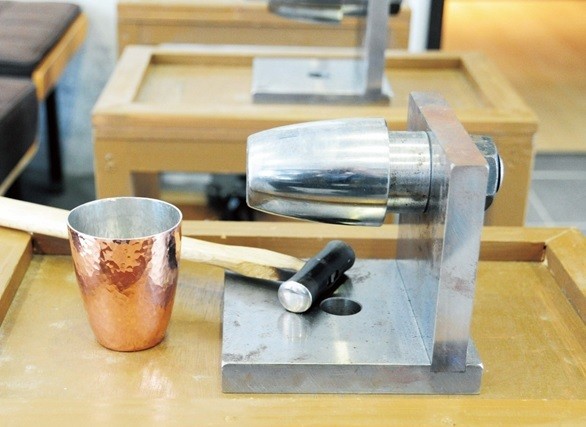
Tsuiki (hammered) copperware, one of Tsubame City’s traditional metalworking products, is made by hammering a single copper plate with a hammer and raising the edges. At the Tsubame Industrial Materials Museum, you can learn about the copperware production process, and also try creating hammered patterns, one of the steps of making tsuiki copperware.Make your own original beer cup or sake cup by hammering the surface with a hammer to create a hammered pattern. The hammered pattern makes the inside of the beer cup uneven, which leads to better foam and creamy beer! A full range of other hands-on activities are also available.
Salmon Salting Experience
Creating a depth of flavour just with autumn salmon, salt, and the power of nature!
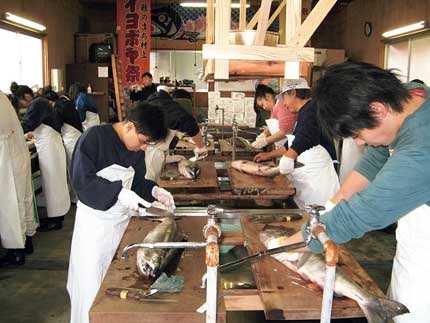
Murakami City has a long history with salmon, so much so that it is said that the city has more than 100 different ways to cook and prepare the fish. Among these methods is salted salmon, the ultimate natural food that is created simply from autumn salmon and salt. Salt is massaged thoroughly and evenly all over the fish and it is then matured through exposure to the low temperature and high humidity of the winter season, creating a delicious dish with super-concentrated umami flavours.So where can you take up the challenge of salting your own salmon? The answer is at the “Echigo-Murakami Sannomaruryu Sake-shiobiki Dojo,” at Iyoboya Kaikan. Every year, from the end of November to mid-December salmon salting events are held, which are extremely popular. Every year the master salters patiently and carefully show people how to salt a salmon.The actual salting experience takes two hours and afterwards you can take home the salmon that you have salted in a Styrofoam box. It is ready for eating after the salt has been washed away and it has been dried. There’s no doubting that your own personally salted salmon will have a unique and wonderful flavour.
Niigata Local Sake PREMIUM SAKE Kura
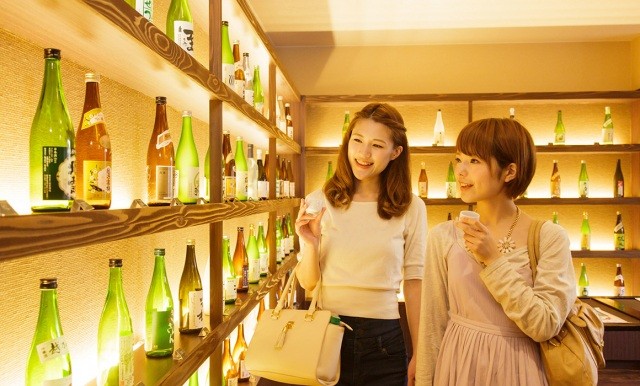
Niigata Prefecture is a "sake powerhouse" with the largest number of sake breweries in Japan. At Kura, you can enjoy carefully selected sake from all of these breweries.
You can freely choose your favorite brand and compare three cups of sake for 600 yen including tax. It is hard to decide which one to choose, but you can refer to the "sweet" or "dry" taste guidelines attached to each sake, or you can choose the label that you like best.
When you try the sake, you will be surprised to find that each sake is a confident product of the respective brewery. They are so delicious that you may end up drinking too much. If you find your favorite sake, you can purchase it on the spot.
You can freely choose your favorite brand and compare three cups of sake for 600 yen including tax. It is hard to decide which one to choose, but you can refer to the "sweet" or "dry" taste guidelines attached to each sake, or you can choose the label that you like best.
When you try the sake, you will be surprised to find that each sake is a confident product of the respective brewery. They are so delicious that you may end up drinking too much. If you find your favorite sake, you can purchase it on the spot.
Tsukioka Onsen
A popular hot spring for women promoting beautiful skin
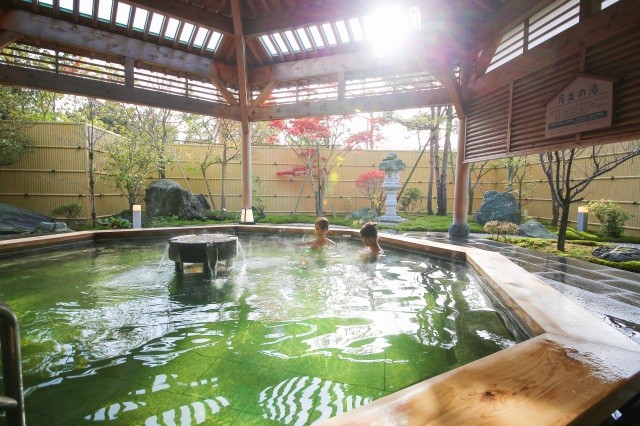
Tsukioka Onsen is famed for its rich sulphuric water with one of the highest sulphur contents of any Onsen in Japan. With exceptionally beautiful emerald green water this hot spring is particularly popular with women as the water is known to promote beautiful skin. The mild alkaline water is smooth on the skin leaving it soft and moist.
During an evening stroll around this hot spring town you will notice the scent of sulphur in the air and may catch a glimpse of a Kimono-clad Geisha dashing under the light of the street lamps. Enjoy a stay at one of the town’s traditional Ryokans (traditional Japanese inns) to really soak up the historic atmosphere.
The town’s charming streets are lined with a variety of traditional shops. Sample a cup of the local Sake, look in on the traditional sweets shops or even try your hand at baking and decorating your own rice crackers. The town also offers unique experiences such as soaking your hands in a special hot spring hand bath, tasting the sulphuric hot spring water or pouring it over the local matchmaking statue to wish for luck in love. Make the most of your Onsen experience with the Yumeguri Tegata Onsen Pass!
During an evening stroll around this hot spring town you will notice the scent of sulphur in the air and may catch a glimpse of a Kimono-clad Geisha dashing under the light of the street lamps. Enjoy a stay at one of the town’s traditional Ryokans (traditional Japanese inns) to really soak up the historic atmosphere.
The town’s charming streets are lined with a variety of traditional shops. Sample a cup of the local Sake, look in on the traditional sweets shops or even try your hand at baking and decorating your own rice crackers. The town also offers unique experiences such as soaking your hands in a special hot spring hand bath, tasting the sulphuric hot spring water or pouring it over the local matchmaking statue to wish for luck in love. Make the most of your Onsen experience with the Yumeguri Tegata Onsen Pass!
Day2
No. 1 Tadami River Bridge Scenic Spot
Magnificent views of the Tadami River and JR Tadami Line in every season
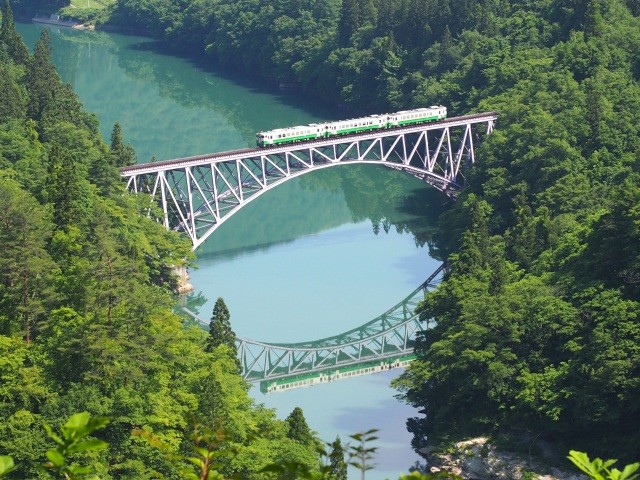
The JR Tadami Line is a local line that connects Aizuwakamatsu in Fukushima Prefecture to Koide in Niigata Prefecture, a distance of about 135 kilometers, and is known throughout Japan for its beautiful scenery. The mountain scenery, whose colors change with the seasons, and the man-made bridge are a beautiful combination, and the No. 1 Tadami River Bridge is particularly famous.A 15-minute walk up the promenade right next to Michi no Eki Ozekaido Mishima Juku, a roadside station, will take you to the scenic spot. From the scenic spot, you can overlook the No. 1 Tadami River Bridge and see fog on the Tadami river in summer, a view surrounded by autumn leaves in fall, and a snowy landscape in winter. In recent years, it has become a popular attraction among international tourists.
Ouchi-juku
Feel the spirit of the old townspeople of this historic town
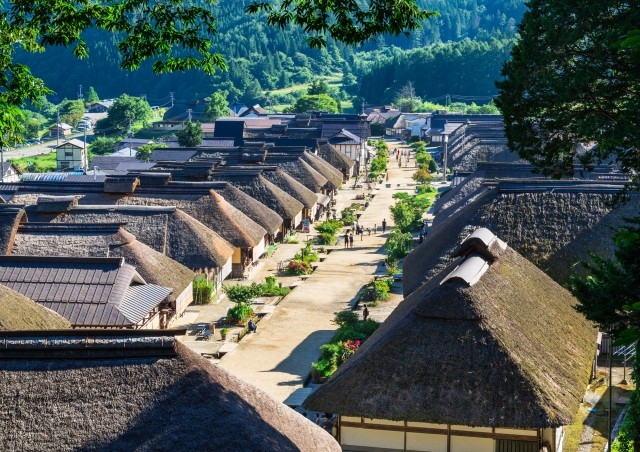
Ouchi-juku is a former post town established around the 17th century and also registered as an Important Preservation District for Groups of Historic Buildings by the Japanese government. The streets lined with thatch-roofed houses are reminiscent of the Edo period (1603-1867), and displays showing the details of life in those times down to the utensils and hearths help visitors imagine what life was like during its heyday.
Continue down the main street where you will reach the Ichi-no-Torii (first gate), of Takakura Shrine, the village's Shinto shrine. Passing through the torii gate, you will find yourself in a quiet walking area. Climb the steps up to the shrine to find a spot with a spectacular view overlooking Ouchi-juku.
There are many souvenir stores and delicious food to eat. Not to be missed is negi soba (leek buckwheat noodles), a local delicacy eaten using sticks of leek as chopsticks. It is not only delicious but also worth a picture! Other attractive foods include tochimochi, a rice cake made by combining horse chestnut and glutinous rice, and shingoro, which looks like a dumpling and is flavored with juunen (perilla) miso.
The area is also close to To no Hetsuri, a scenic gorge designated as a National Natural Monument, making Ouchi-juku a place worth visiting.
Continue down the main street where you will reach the Ichi-no-Torii (first gate), of Takakura Shrine, the village's Shinto shrine. Passing through the torii gate, you will find yourself in a quiet walking area. Climb the steps up to the shrine to find a spot with a spectacular view overlooking Ouchi-juku.
There are many souvenir stores and delicious food to eat. Not to be missed is negi soba (leek buckwheat noodles), a local delicacy eaten using sticks of leek as chopsticks. It is not only delicious but also worth a picture! Other attractive foods include tochimochi, a rice cake made by combining horse chestnut and glutinous rice, and shingoro, which looks like a dumpling and is flavored with juunen (perilla) miso.
The area is also close to To no Hetsuri, a scenic gorge designated as a National Natural Monument, making Ouchi-juku a place worth visiting.
Tsurugajo Castle
Japan’s only castle with elegant red tiled roofs
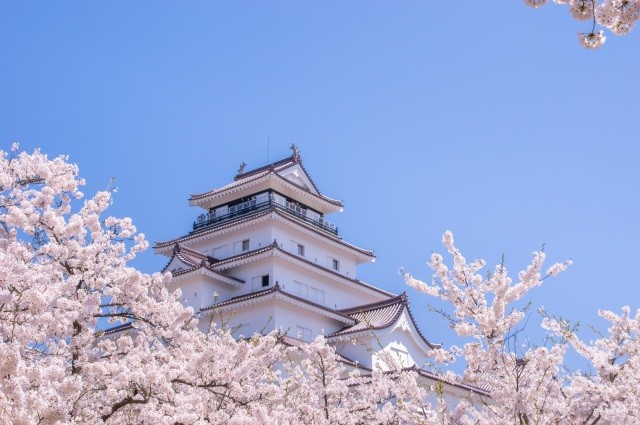
Tsuruga Castle, also known as Aizu Castle or Aizuwakamatsu Castle, is famed as an impregnable fortress that withstood a month-long siege by the newly formed government during the Boshin war in 1868.
The castle has undergone additional repairs since being reconstructed in 1965. Reroofing work was completed in 2011 to reproduce the look of the 17th century castle. Selected as one of Japan’s most famous 100 castles, it is the only existing castle with red tiled roofs in Japan. The stone walls of the castle tower survived the devastating 1611 earthquake and today stand in their original form.
The castle keep is now open as a museum and visitors can enjoy a panoramic view of the city of Aizuwakamatsu from the top floor. After exploring the castle, the tearoom “Rinkaku” in the Tsuruga Castle Park, built by the tea master Sen no Rikyu’s son-in-law, is the perfect place to enjoy a cup of tea in the castle’s traditional garden.
Tsuruga Castle Park is famous for its thousand cherry blossom trees illuminated at night. The surrounding trees are also illuminated in autumn to show off the vividly changing colours of their leaves. Meanwhile the castle fills with visitors during the “Aizue Candle Festival” each winter. The view of the snow-covered castle illuminated by traditional hand-decorated candles is unforgettable!
A thematic journey in the Tohoku region:Castles・Samurai
The castle has undergone additional repairs since being reconstructed in 1965. Reroofing work was completed in 2011 to reproduce the look of the 17th century castle. Selected as one of Japan’s most famous 100 castles, it is the only existing castle with red tiled roofs in Japan. The stone walls of the castle tower survived the devastating 1611 earthquake and today stand in their original form.
The castle keep is now open as a museum and visitors can enjoy a panoramic view of the city of Aizuwakamatsu from the top floor. After exploring the castle, the tearoom “Rinkaku” in the Tsuruga Castle Park, built by the tea master Sen no Rikyu’s son-in-law, is the perfect place to enjoy a cup of tea in the castle’s traditional garden.
Tsuruga Castle Park is famous for its thousand cherry blossom trees illuminated at night. The surrounding trees are also illuminated in autumn to show off the vividly changing colours of their leaves. Meanwhile the castle fills with visitors during the “Aizue Candle Festival” each winter. The view of the snow-covered castle illuminated by traditional hand-decorated candles is unforgettable!
A thematic journey in the Tohoku region:Castles・Samurai
Sazaedo
Experience the wonderland of this double-helix wooden structure – the only one of its kind!
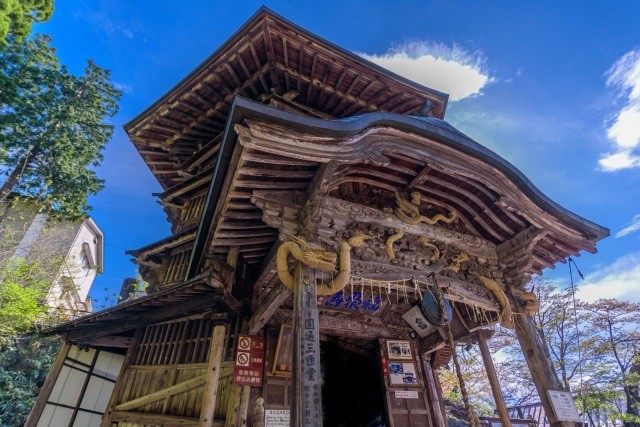
Sazae-do is a three-storied, hexagonal pagoda with the look of an optical illusion. Officially called “Entsu Sansodo”, the temple is known by the nickname “Sazae-do” as its shape resembles a turban shell. The double-helix wooden structure is the only one of its kind in the world and has been designated an Important Cultural Property.
Go inside and walk up the winding slope while observing the curved windows. Thanks to its one-way path you never have to pass anyone on your way up or down. Rumours abound about the construction of this unique structure. According to one Sazae-do was based on the design of Leonard da Vinci’s Chateau de Chambord. Another says the temple’s head priest was inspired by a revelation from heaven. Experience the wonder of the one-way spiral path within this strangely distorted interior space!
Sazae-do was once part of a pilgrimage trail with 33 Kannon statues lining the slope up to the structure. Pilgrims came here as an alternative to the Saigoku Kannon Pilgrimage and today the ceiling of Sazae-do is still covered with stickers from people who accomplished the pilgrimage here.
The building is part of a shrine complex at the base of Mount Iimori. The “Uga Shindo”, 19 statues worshipping the famous Byakkotai (a group of young samurai), is located nearby.
Go inside and walk up the winding slope while observing the curved windows. Thanks to its one-way path you never have to pass anyone on your way up or down. Rumours abound about the construction of this unique structure. According to one Sazae-do was based on the design of Leonard da Vinci’s Chateau de Chambord. Another says the temple’s head priest was inspired by a revelation from heaven. Experience the wonder of the one-way spiral path within this strangely distorted interior space!
Sazae-do was once part of a pilgrimage trail with 33 Kannon statues lining the slope up to the structure. Pilgrims came here as an alternative to the Saigoku Kannon Pilgrimage and today the ceiling of Sazae-do is still covered with stickers from people who accomplished the pilgrimage here.
The building is part of a shrine complex at the base of Mount Iimori. The “Uga Shindo”, 19 statues worshipping the famous Byakkotai (a group of young samurai), is located nearby.
Aizu-nuri: a hands-on lacquering (makie) experience
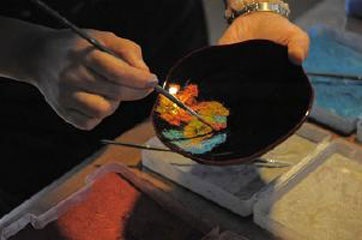
Maki-e is a unique Japanese craft technique in which a picture is drawn on the surface of a lacquer ware using lacquer and gold or silver metal powder or colored powder is sprinkled on the surface. At lacquerware stores in Aizu Wakamatsu, you can choose your favorite Aizu lacquerware, such as bowls and hand mirrors, and make your own lacquerware by freely drawing pictures on it.
Lake Inawashiro
A lake fascinating visitors with its seasonal beauty
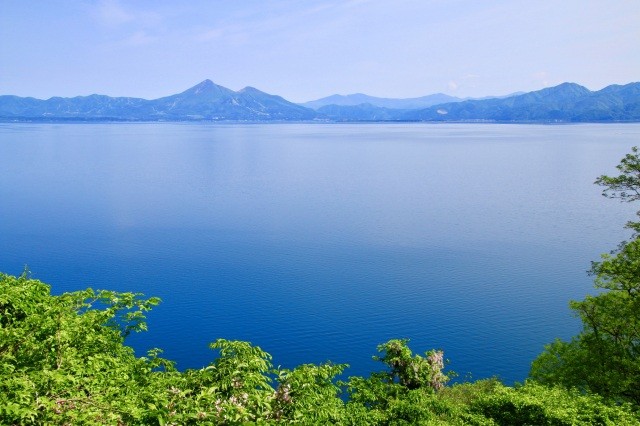
The 100km2 Lake Inawashiro is one of the largest lakes in Japan. The lake is so big that you may feel as if you were standing by the sea. The crystal clear water gives rise to the colloquial name of “Tenkyo-ko”, the lake of heaven’s reflection.
The lake attracts visitors all year round with its seasonal charms. A spring walk along the lake offers a magnificent view of Mount Bandai framed in cherry blossoms. Summer attractions at the lake include camping, swimming and a wide range of water sports. The surrounding autumnal leaves reflect picturesquely on the water while a flock of migratory swans lives here during winter.
The most popular winter attraction is known as “Shibuki Gori”, a unique phenomenon caused by the lake water being splashed by strong winds and immediately freezing on the surrounding trees. Many people come to see the unique decorations of this icy spray.
Among the many scenic locations around the lake, our recommendation is the view looking down the lake from the Showa-no-Mori Observatory. Pleasure boat rides are available throughout the year.
Other attractions in the neighbourhood include farms, hot springs, boutique cafes and ski resorts. The lake and its surrounding area are capable of providing both relaxing and active holidays!
The lake attracts visitors all year round with its seasonal charms. A spring walk along the lake offers a magnificent view of Mount Bandai framed in cherry blossoms. Summer attractions at the lake include camping, swimming and a wide range of water sports. The surrounding autumnal leaves reflect picturesquely on the water while a flock of migratory swans lives here during winter.
The most popular winter attraction is known as “Shibuki Gori”, a unique phenomenon caused by the lake water being splashed by strong winds and immediately freezing on the surrounding trees. Many people come to see the unique decorations of this icy spray.
Among the many scenic locations around the lake, our recommendation is the view looking down the lake from the Showa-no-Mori Observatory. Pleasure boat rides are available throughout the year.
Other attractions in the neighbourhood include farms, hot springs, boutique cafes and ski resorts. The lake and its surrounding area are capable of providing both relaxing and active holidays!
Enjoy Inawashiro and Urabandai
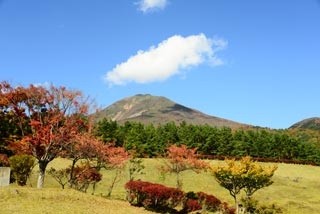
Enjoy the miracle of nature, Urabandai and Lake Inawashiro.
Gold Line → Hibara Lake → Goshikinuma Swamp → Tenkagamikaku → Landing
Recommended points of interest
Enjoy the magnificent scenery of Urabandai created by the miracle of nature.
Gold Line → Hibara Lake → Goshikinuma Swamp → Tenkagamikaku → Landing
Recommended points of interest
Enjoy the magnificent scenery of Urabandai created by the miracle of nature.
Day3
Goshikinuma Lake
See the mysterious hues of this group of lakes and ponds
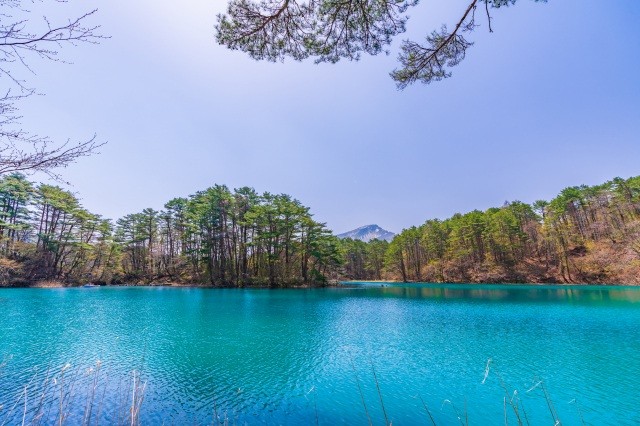
Goshikinuma, literally meaning “Five Coloured Ponds”, is a group of volcanic lakes, ponds and marshes. The ponds take their name from the mysterious hues that vary in colour depending on the season, weather and angle of view. The complex actually consists of more than five ponds including the renowned Bishamon-numa, Aka-numa, Midoro-numa, Tatsu-numa, Benten-numa, Ruri-numa, Ao-numa and Yanagi-numa. Goshikinuma is formally known as the “Group of Lakes and Ponds of Goshikinuma” and was awarded one star in the Michelin Green Guide in 2016.
On the largest pond, Bishamon-numa, row boats are available for hire and large numbers of carp can be seen swimming about. Be sure to keep an eye out for the rare one with heart-shaped spots on her side which is thought to bring good luck!
Each pond has a character all its own. Aka-numa is framed with red-tinted plants thanks to the high iron content of the water. Meanwhile three different colours can be seen on the surface of Midoro-numa.
The Goshikinuma Nature Trail is a beautiful walking path linking the lakes and ponds. It takes just over an hour to walk the trail’s gently sloping hills and it is suitable for people of all abilities. Early birds may be lucky enough to catch a mesmerising view of the lakes and ponds crowned with morning mists. The clear waters of Yagi-numa is a must-see!
There are several vantage points around Goshikinuma where visitors can enjoy breath-taking views of the lakes and ponds as well as nearby Mount Bandai, one of Japan’s most famous mountains.
On the largest pond, Bishamon-numa, row boats are available for hire and large numbers of carp can be seen swimming about. Be sure to keep an eye out for the rare one with heart-shaped spots on her side which is thought to bring good luck!
Each pond has a character all its own. Aka-numa is framed with red-tinted plants thanks to the high iron content of the water. Meanwhile three different colours can be seen on the surface of Midoro-numa.
The Goshikinuma Nature Trail is a beautiful walking path linking the lakes and ponds. It takes just over an hour to walk the trail’s gently sloping hills and it is suitable for people of all abilities. Early birds may be lucky enough to catch a mesmerising view of the lakes and ponds crowned with morning mists. The clear waters of Yagi-numa is a must-see!
There are several vantage points around Goshikinuma where visitors can enjoy breath-taking views of the lakes and ponds as well as nearby Mount Bandai, one of Japan’s most famous mountains.
Bandai-Azuma Skyline
Enjoy a scenic drive to the clouds in the sky!
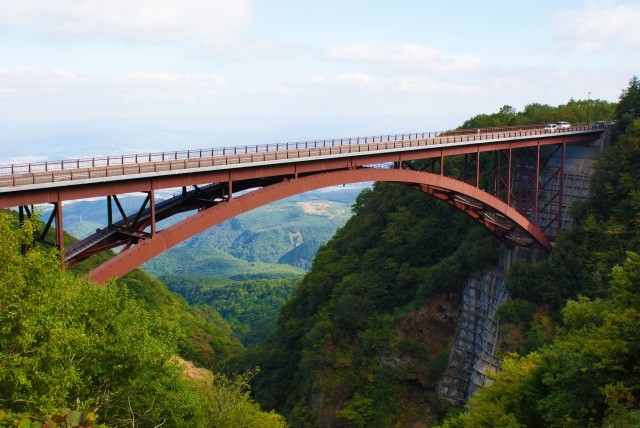
With a maximum elevation of 1,622m, the Bandai Azuma Skyline is a scenic driving route meandering through the Azuma mountain range, between Takayu Onsen and Tsuchiyu Toge Pass. Selected as one of Japan’s top 100 roads, driving the alpine road through the fleecy clouds demonstrates the worthiness of its name “Skyline”.
You won’t be able to take your eyes off the breathtakingly diverse scenery ranging from lush greenery to wild volcanic landscapes. Early spring ice walls on either side of the road and the changing leaves of autumn are seasonal spectacles.
Don’t miss the Azuma Hakkei (Eight Views of Azuma) selected by the noted writer Yasushi Inoue. The highlight of the drive is the Fudosawa Bridge spanning over the Tsubakuro Valley. The view from the bridge is spectacular and makes visitors feel as if they were floating in the sky.
Along the way, Jododaira is a good place to take a break as it is home to a rest house, visitor centre and observatory. A hiking trail to Mount Azuma Kofuji, popular for its monstrous crater known as the “Cauldron”, also starts here. The gigantic crater is a must visit, while fumes can be seen emitting from the nearby active volcano, Mount Issai Kyozan.
Be sure to confirm opening times before travelling as the Bandai Azuma Skyline is closed during winter.
You won’t be able to take your eyes off the breathtakingly diverse scenery ranging from lush greenery to wild volcanic landscapes. Early spring ice walls on either side of the road and the changing leaves of autumn are seasonal spectacles.
Don’t miss the Azuma Hakkei (Eight Views of Azuma) selected by the noted writer Yasushi Inoue. The highlight of the drive is the Fudosawa Bridge spanning over the Tsubakuro Valley. The view from the bridge is spectacular and makes visitors feel as if they were floating in the sky.
Along the way, Jododaira is a good place to take a break as it is home to a rest house, visitor centre and observatory. A hiking trail to Mount Azuma Kofuji, popular for its monstrous crater known as the “Cauldron”, also starts here. The gigantic crater is a must visit, while fumes can be seen emitting from the nearby active volcano, Mount Issai Kyozan.
Be sure to confirm opening times before travelling as the Bandai Azuma Skyline is closed during winter.
Fruit Picking
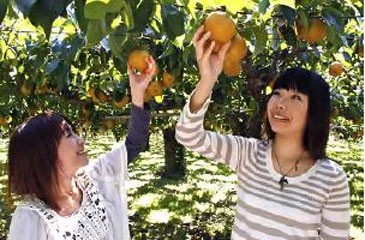
Located in the western part of Fukushima City, Prefectural Road No. 5 is nicknamed "Fruit Line" because of the many orchards along the road, and is lined with many fruit stores and tourist orchards where visitors can pick fruits. Visitors can enjoy picking fresh fruits such as peaches, pears, apples, cherries, and grapes from season to season.
Mt. Hanami
"Paradise" in Fukushima
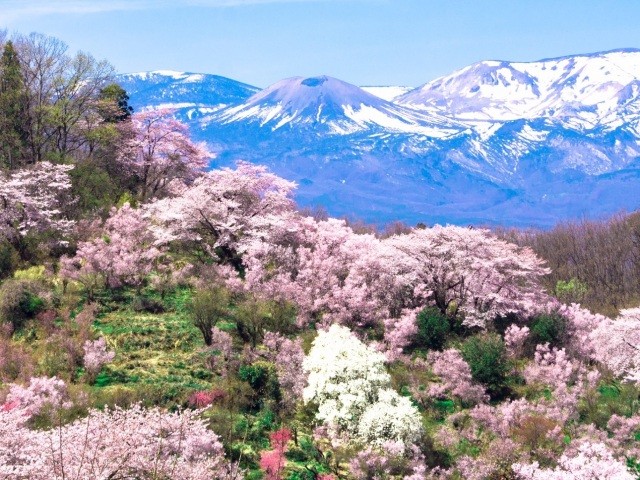
Mt. Hanami is one of the most popular tourist attractions in Fukushima Prefecture, enticing tourists from all over Japan every year. Photographer Shotaro Akiyama directed the rest of the country's attention to this beautiful spot, calling it “a real paradise in Fukushima," where it then became known as one of Fukushima City's most famous flower spots. The area around the park is dotted with flower and tree farms. Mt. Hanami Park has been open to the public since 1959, and has been handed down from generation to generation from the first owner of the park, who wanted as many people as possible to see beautiful flowers.
The beautiful landscape of Mt. Hanami Park and its surroundings is made up of colorful flower and tree fields, beautiful streams, and a village landscape created the flower- and tree-producing farmers of the Watari area of Fukushima City. In spring, about 70 kinds of flowers, such as plum blossoms, Japanese apricot, cherry blossoms, lingonberries, bokeh, magnolias, etc., bloom one after another, and the whole mountain is dyed pale pink. On a clear day, you can see the Azuma Mountain Range and the Adachi Tara Federation. When the snow that falls on Azuma Kofuji begins to melt, the remaining snow on the mountain's surface becomes shaped like a rabbit, which is a temporary sight called "the snow rabbit of Azuma" cherished by locals. From the top of the mountain, one may enjoy a view of Fukushima city alongside the beautiful scenery of blooming flowers. In the park, volunteer guides called "Fukushima Flower Guides" will show you around the fields. *During the cherry blossom season (from the end of March to mid-April), traffic restrictions will be imposed in the surrounding areas to ease traffic congestion. During this period, please use the temporary parking lot (Abukuma Oyamizu Park), the toll parking lots around Fukushima Station, and the temporary bus "Hanamiyama-go".
The beautiful landscape of Mt. Hanami Park and its surroundings is made up of colorful flower and tree fields, beautiful streams, and a village landscape created the flower- and tree-producing farmers of the Watari area of Fukushima City. In spring, about 70 kinds of flowers, such as plum blossoms, Japanese apricot, cherry blossoms, lingonberries, bokeh, magnolias, etc., bloom one after another, and the whole mountain is dyed pale pink. On a clear day, you can see the Azuma Mountain Range and the Adachi Tara Federation. When the snow that falls on Azuma Kofuji begins to melt, the remaining snow on the mountain's surface becomes shaped like a rabbit, which is a temporary sight called "the snow rabbit of Azuma" cherished by locals. From the top of the mountain, one may enjoy a view of Fukushima city alongside the beautiful scenery of blooming flowers. In the park, volunteer guides called "Fukushima Flower Guides" will show you around the fields. *During the cherry blossom season (from the end of March to mid-April), traffic restrictions will be imposed in the surrounding areas to ease traffic congestion. During this period, please use the temporary parking lot (Abukuma Oyamizu Park), the toll parking lots around Fukushima Station, and the temporary bus "Hanamiyama-go".
Miyagi Zao Kokeshikan
Feel the history and the joy of creation in the hometown of Miyagi traditional Kokeshi Dolls
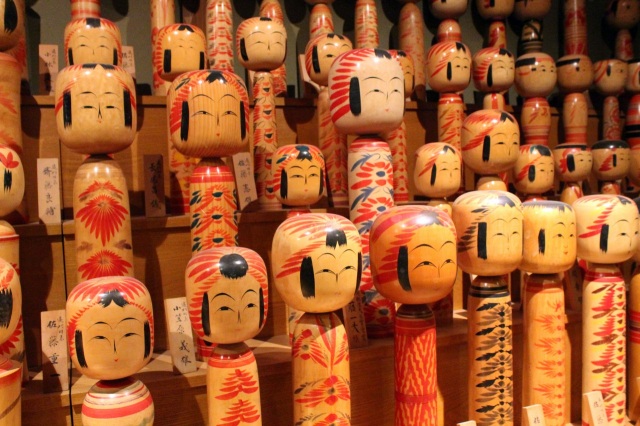
Togatta Onsen, the birthplace of kokeshi dolls in Miyagi Prefecture. Traditional kokeshi dolls and wooden toys from six prefectures in the Tohoku region, including Togatta, are on display. In addition to exhibits that clearly show the characteristics of each kokeshi by lineage, visitors can learn about the process and history of kokeshi making, watch a demonstration by a kokeshi craftsman, and try their hand at painting a kokeshi doll.
Sendai (Beef tongue)
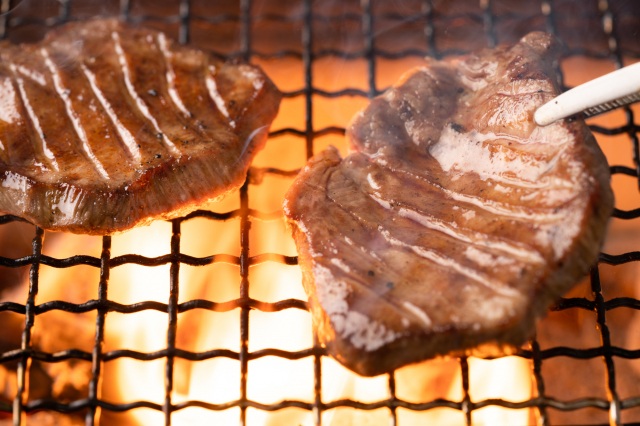
Beef tongue omelet originated in Sendai.
In 1948, the first restaurant specializing in gyutan-yaki was established, and from there it spread throughout the country. The taste is now well established as a Sendai specialty. It is said that there are currently about 100 restaurants specializing in this dish in Sendai City, testifying to the popularity of this dish. Although it is possible to order the beef tongue yaki separately, the standard set meal is the "beef tongue yaki set meal," which consists of beef tongue yaki, pickled Chinese cabbage and cucumber with green chili peppers pickled in miso, barley rice, and tail soup. Even though the menu is the same, each specialty restaurant has its own specialties, such as the part of the beef tongue used and the way it is prepared.
In 1948, the first restaurant specializing in gyutan-yaki was established, and from there it spread throughout the country. The taste is now well established as a Sendai specialty. It is said that there are currently about 100 restaurants specializing in this dish in Sendai City, testifying to the popularity of this dish. Although it is possible to order the beef tongue yaki separately, the standard set meal is the "beef tongue yaki set meal," which consists of beef tongue yaki, pickled Chinese cabbage and cucumber with green chili peppers pickled in miso, barley rice, and tail soup. Even though the menu is the same, each specialty restaurant has its own specialties, such as the part of the beef tongue used and the way it is prepared.
Sendai Castle ruins
An impregnable and famous castle built on Mt Aoba.
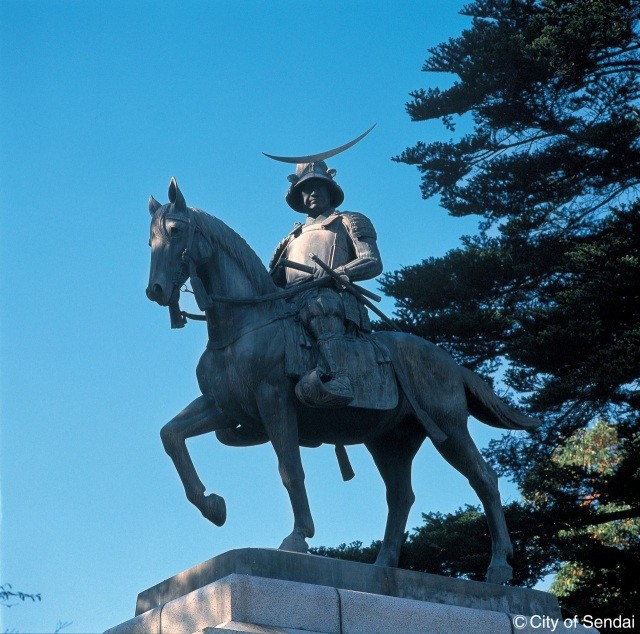
Sendai Castle (Aoba Castle) was the residence of Date 620,000 goku. The castle was built at an elevation of 130 m above sea level, with cliffs to the east and south. It is said that the castle did not have a castle tower to avoid the warnings of Shogun Tokugawa Ieyasu. Unfortunately, the castle is now gone, and the reconstructed side turrets are a reminder of bygone days. If you stand in front of the statue of Masamune Masamune's cavalryman, you can view the city of Sendai from the same vantage point as Masamune, who was ambitious to conquer the whole country.
At the Aoba Castle Museum and Exhibition Hall, visitors can view computer-generated images of a reconstruction of Aoba Castle. In the summer of 2003, Aoba Castle was designated as a National Historic Site.
The area around the ruins of the castle is Aobayama Park, and from the ruins of the castle's main citadel, you can enjoy a panoramic view of Sendai City and the Pacific Ocean. In front of the bronze statue of Bansui Doi, an automatic performance of "The Moon over the Deserted Castle" is played every 30 minutes from 9:00 to 18:00. From the castle tower, visitors can enjoy the night view of Sendai, a city of one million.
At the Aoba Castle Museum and Exhibition Hall, visitors can view computer-generated images of a reconstruction of Aoba Castle. In the summer of 2003, Aoba Castle was designated as a National Historic Site.
The area around the ruins of the castle is Aobayama Park, and from the ruins of the castle's main citadel, you can enjoy a panoramic view of Sendai City and the Pacific Ocean. In front of the bronze statue of Bansui Doi, an automatic performance of "The Moon over the Deserted Castle" is played every 30 minutes from 9:00 to 18:00. From the castle tower, visitors can enjoy the night view of Sendai, a city of one million.
Matsushima Bay and the four best viewing locations (Shitaikan)
Unbeatable locations to enjoy views across Matsushima Bay
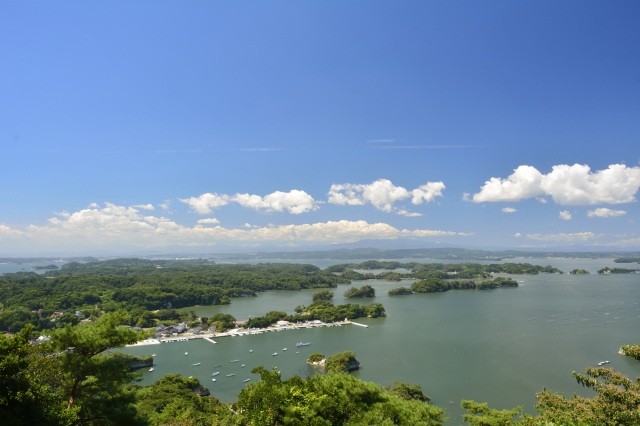
Along with Amanohashidate in Kyoto and Miyajima in Hiroshima, Matsushima Bay is known as one of Japan’s top three scenic views. The bay is dotted with some 260 islands of various sizes. The best locations for a panoramic view of these islands are known as the Shitaikan and each location has a nickname describing its view.
The Sokan (magnificent view) from Mount Otakamori at 105.8m above sea level offers a view of Matsushima Bay from the east. Visitors can enjoy a 360° panoramic view of Matsushima Bay while feeling as if they were at their own private water villa. The view includes the Sagakei cliffs and the distant Zao mountain range.
The Reikan (elegant view) from Mount Tomiyama at 116.8m above sea level is the highest viewpoint of the Shitaikan. Visitors can enjoy a graceful view of Matsushima Bay from the peaceful garden of Daigyoji Temple enshrining Tomiyama Kannon at the top of the mountain.
The Ikan (grand view) from Mount Tamon at 55.6m above sea level offers views of the bay and Shiogama port with its ships gracefully entering and departing.
The Yukan (spiritual view) from Ogidani highland at 55.8m above sea level provides a panoramic view of Matsushima Bay and the beautiful fan-shaped inlet spanning to the bay before you. The Yukan is also known for its stunning display of autumn leaves.
After enjoying the magnificent view from the Shitaikan, a pleasure boat ride through the islands is another popular attraction. Feeding the flock of seagulls from the boat will be one of the many local memories that will remain with you!
The Sokan (magnificent view) from Mount Otakamori at 105.8m above sea level offers a view of Matsushima Bay from the east. Visitors can enjoy a 360° panoramic view of Matsushima Bay while feeling as if they were at their own private water villa. The view includes the Sagakei cliffs and the distant Zao mountain range.
The Reikan (elegant view) from Mount Tomiyama at 116.8m above sea level is the highest viewpoint of the Shitaikan. Visitors can enjoy a graceful view of Matsushima Bay from the peaceful garden of Daigyoji Temple enshrining Tomiyama Kannon at the top of the mountain.
The Ikan (grand view) from Mount Tamon at 55.6m above sea level offers views of the bay and Shiogama port with its ships gracefully entering and departing.
The Yukan (spiritual view) from Ogidani highland at 55.8m above sea level provides a panoramic view of Matsushima Bay and the beautiful fan-shaped inlet spanning to the bay before you. The Yukan is also known for its stunning display of autumn leaves.
After enjoying the magnificent view from the Shitaikan, a pleasure boat ride through the islands is another popular attraction. Feeding the flock of seagulls from the boat will be one of the many local memories that will remain with you!
Sendai Station, Sendai Airport
GOAL
